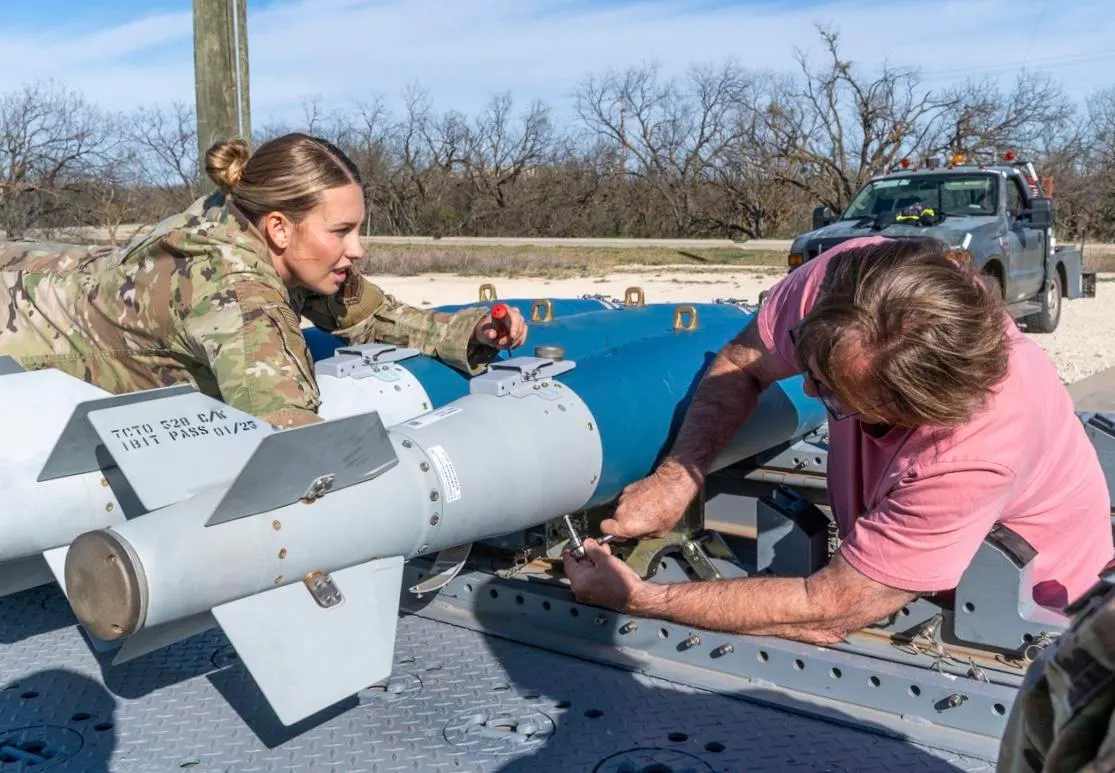By Contributor,Jim Clash
Copyright forbes

SSgt Kaitlyn Beard instructs Forbes writer Jim Clash in a dummy exercise to assemble a 500-lb inert MK-82 bomb replica, Dyess AFB, Abilene, Texas, March 27, 2025.
Art Harman ALL RIGHTS RESERVED
A few years ago, I visited Berlin, Germany, to immerse myself in a bomb disposal unit for a few days (link below). Basically, the job of the squad there was to hunt down, dismantle and detonate dangerous unexploded Russian, British and American ordnance from WWII.
It’s a big problem in Germany. Each year some 2,000 tons – yes tons – of the lethal stuff is unearthed. The longer the TNT in those bombs remains in the ground, the more unstable it becomes. So the Germans essentially are in a race with themselves against time.
During my week-long visit to Dyess AFB in Abilene, Texas, last spring, I participated in a number of military activities, one of which was effectively the opposite of what I did in Germany: To assemble bombs.
Forbes writer Jim Clash aligns tail fin on an inert MK-82 bomb replica, Dyess AFB, Abilene, Texas, March 27, 2025.
Art Harman ALL RIGHTS RESERVED
These were not live ones, of course, but inert, used mainly to train airmen in the assembly process. Think of it this way: It’s like a pilot training in a flight simulator before he or she takes a quarter-billion-dollar B-1 Bomber out for a spin.
After being driven to a highly secure area on the base, I was introduced to SSgt Kaitlyn Beard, Conventional Maintenance Crew Chief 7th MUNS. The bomb I was to work with was a 500-pounder, a BDU-50, a replica of a real MK-82. With an internal guidance system, the smart -82s can strike within 40 feet of a target.
After watching the crew assemble one, I was given a torque wrench. My task was to attach a JDAM guidance system and accompanying tail fins to the body of the device. That required me to visually line up the holes first, insert a half-dozen tiny screws, then use the wrench to sequentially tighten each to exacting specs.
Forbes writer Jim Clash assembles a 500-lb inert MK-82 practice bomb replica, Dyess AFB, Abilene, Texas, March 27, 2025.
Art Harman ALL RIGHTS RESERVED
Once the fins were in place, it was time to insert the guidance and fuse assembly into the front of the bomb. That mandated use of a special tool to unscrew the dense metal nose, insert the fuse, then replace the nose and tighten it with a strange tool. It was important to ensure you did not strip the metal threads while loosening and tightening, so it was slow going. First mission complete.
Next it was over to a large hangar which housed a B-1 Bomber mock-up to meet up with TSgt Aleczandro Perez, Loading Standardization Crew Member, 7th MXG, and his staff. In this building, airmen train to insert assembled inert ordnance into the aircraft’s bomb bay. Here we were dealing with real monsters – precision-guided 2,000-pounders. It’s hard to describe, but essentially the heavy dummy bomb is first attached via a small crane to a balancing chain, then guided over to the mock-up.
After alignment, the crane operator raises the bomb carefully in to the bomb bay until it locks into place. Once that was accomplished, I climbed up a ladder into the bay, and, with a long tool, clumsily secured it with several bolts.
Forbes writer Jim Clash helps insert a 2,000-lb inert bomb into a mock-up B-1 bomb bay, Dyess AFB, Abilene, Texas, March 27, 2025.
Art Harman ALL RIGHTS RESERVED
The procedure was complicated enough without time constraints. Imagine the pressure on candidates when they are tested both for time and accuracy to determine whether they can move on to working with live bombs.
These assembly and insertion exercises brought home to me firsthand just how precise airmen must be in carrying out their duties. The extensive training at the base prepares them for arming B-1s with the real thing under pressure and at a moment’s notice, often in unfriendly territory.
Result? America’s B-1s remain a vital deterrent in keeping the peace. Thanks to all of the airmen and women who serve our country in their necessary roles.
Editorial StandardsReprints & Permissions



